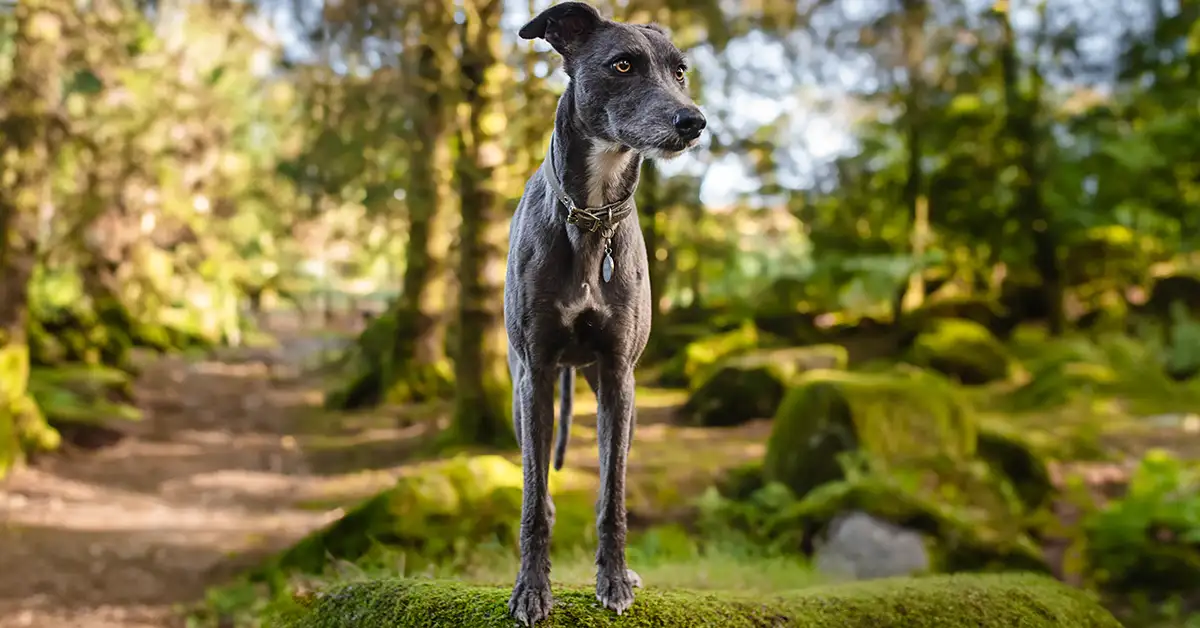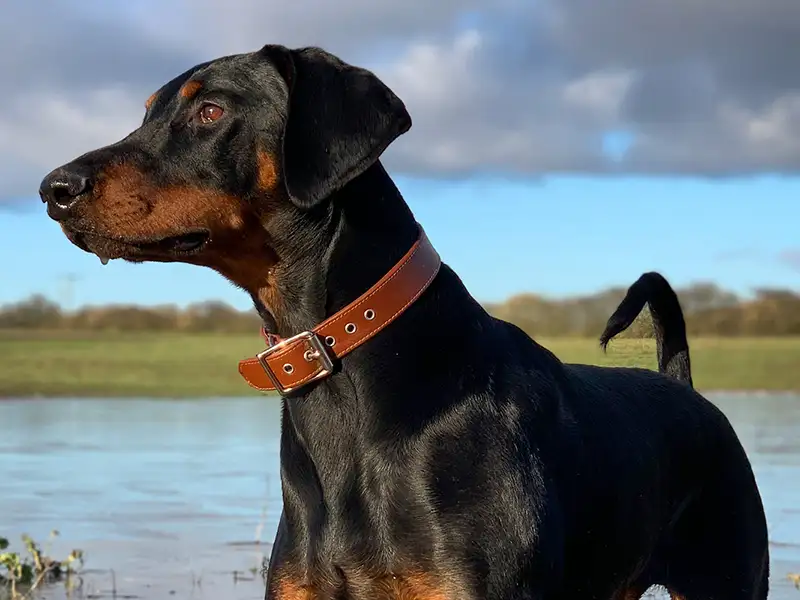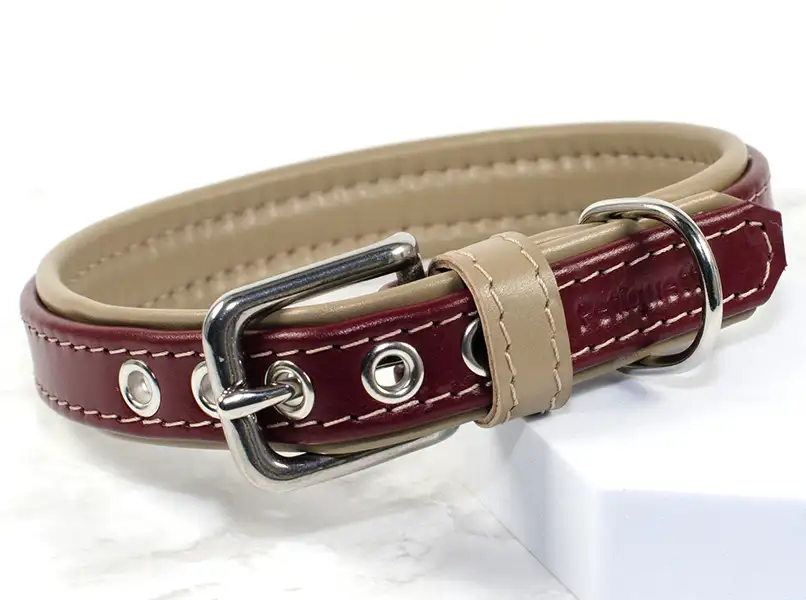Collar & Product Guides
Are Leather Collars a Good Choice for Dogs?
Is a Leather Collar Right for Your Dog?
With so many collar options available, it’s not always easy to know what’s best for your dog. Leather collars are often seen as the premium choice — but are they practical too?
In this post, we’ll explain exactly when leather collars work well, where they fall short, and how to decide if one suits your dog’s needs.
Still deciding what kind of collar to go for? Our Leather Dog Collar Guide covers everything you need to know before buying.
What Makes Leather Dog Collars So Popular?
There’s a reason leather collars continue to be a top choice for dog owners — they offer something you don’t always get from fabric or nylon.
For many, it comes down to style and substance.
- Leather looks smart without being over the top — perfect for everyday walks or special occasions
- It’s available in a huge range of colours, linings, and textures, so it’s easy to find something that suits your dog’s personality
- You can customise the finish — from classic brass buckles to Swarovski crystals, rolled edges or flat styles
- It just feels more premium — whether you’re holding it in your hand or seeing it on your dog
A leather collar isn’t just functional — it’s something you enjoy choosing, using, and showing off. It’s a small upgrade that makes a big difference.
Want something that fits your dog’s style? Take a look at our leather dog collars — handmade to order in over two dozen colours.
What Are the Benefits of Leather Dog Collars?
Once you’ve tried a good leather collar, it’s hard to go back. The comfort and reliability speak for themselves — especially if your dog wears their collar every day.

Here’s what sets leather apart from other materials:
- It moulds to your dog’s neck – The more they wear it, the more comfortable it becomes
- It holds up to everyday life – No fraying, stretching, or threads coming loose
- It softens with age – A quality leather collar only gets better over time
- It doesn’t trap fluff or hold odour – Especially useful for long-haired or active dogs
- It feels good to use – Whether you’re buckling it on or clipping on a lead, everything just works smoothly
It’s that rare mix of practicality, comfort, and good design — and it’s one of the reasons so many of our customers keep coming back for more.
Curious what other dog owners think? Read What Customers Really Think of Our Leather Collars
Are There Any Downsides to Leather Dog Collars?
Leather is a great option for most dogs, but like anything, it works best when you know how to look after it.
- Yes, it can get wet — including in the sea – If your dog enjoys beach walks or a splash in the waves, that’s absolutely fine. Just give the collar a quick wipe with a damp cloth to remove any salt or sand, and let it dry naturally (away from radiators or direct heat).
- It benefits from occasional care – A quick clean here and there, plus a bit of conditioning every so often, helps keep the leather soft and looking smart.
- It’s more of an investment – While leather does cost more upfront than nylon or fabric, it lasts much longer when cared for — which means fewer replacements and better value over time.
So if your dog swims, rolls, or generally lives life to the full — don’t worry. Leather can handle it, as long as you give it a bit of love afterwards.
Need care tips? Here’s How to Clean and Care for a Leather Dog Collar
Which Dogs Are Leather Collars Best For?
Leather collars are a brilliant choice for most dogs — especially if you’re after something that balances comfort, style, and long-term value. If your dog ticks any of the boxes below, they’ll likely benefit from switching to leather:

- Dogs with short or fine coats – Leather is smooth and gentle, with no scratchy edges
- Long-haired breeds – A rolled leather collar helps prevent matting and tangles around the neck
- Dogs who wear collars all day – Whether it’s for holding an ID tag or just out of habit, leather is breathable and soft enough for daily wear
- Dogs prone to skin irritation – Many owners switch to leather when nylon or synthetic collars cause rubbing or discomfort
- Dogs who need a collar that lasts – Tired of buying a new collar every few months? Leather holds its shape and won’t fray
Our collars are made to order in a wide range of widths, shapes, and colours — so whether you’re buying for a tiny pup or a large adult, there’s something here to fit.
Not sure which size or style your dog needs? Our Size Guide will help you measure up in minutes.
When Leather Might Not Be Ideal (But Usually Is)
Leather collars are more versatile than people think — especially when they’re made well. Light rain, muddy walks, or a splash through a stream aren’t a problem as long as you look after them.
That said, there are a few things to keep in mind:
- If your dog goes swimming in the sea, it’s a good idea to give the collar a quick wipe with a damp sponge afterwards to remove any salt
- If the collar gets soaked, take it off and let it dry naturally — don’t put it near a radiator
- Leather isn’t machine washable, so if you’re after something you can chuck in with the laundry, it might not be the right match
And what about puppies? Leather is absolutely suitable for young dogs — especially when it’s soft and adjustable. Our puppy collars are designed with growing dogs in mind. And let’s be honest, if they outgrow it quickly, it just means you get to treat them to a new one in a fresh colour.
Want to compare leather and fabric side by side? Take a look at Are Leather Dog Collars Better Than Fabric?
Thinking of Making the Switch?
If you’re after a collar that’s comfortable, well-made, and built to last — leather could be the perfect choice for your dog.

Browse our leather dog collar collection to find the right fit in over two dozen colours, all handmade in the UK using Italian calf leather.
You might also like:
- Which Collar is Most Comfortable For Dogs?
- 7 Collars Your Dog Needs in Their Wardrobe
- Do Leather Dog Collars Get Smelly?
- Leather Dog Collars: Everything You Need to Know Before You Buy
FAQs About Leather Dog Collars
Are leather dog collars safe for all breeds?
Yes, leather dog collars are safe for most dogs, regardless of breed — as long as the collar fits properly and is made from quality materials. Leather is smooth, flexible, and less likely to cause friction or irritation compared to rougher synthetic options. For dogs with sensitive necks or fine coats, it can actually be a more comfortable choice.
Do vets recommend leather collars for dogs with skin issues?
Many vets do recommend leather collars for dogs with skin sensitivities. Leather is a breathable, natural material that’s less likely to cause rubbing or overheating. While no material works for every single dog, leather is often preferred over nylon or plastic for dogs prone to irritation, especially when the collar is well-fitted and kept clean.
Do leather dog collars last longer than nylon?
Yes, when cared for properly, a leather dog collar will usually last much longer than a nylon one. Nylon can fray, stretch, or lose its shape over time — especially with heavy use or rough play. Leather holds its structure better and, with occasional cleaning and conditioning, can look good for years.
Can leather collars get wet?
They can — and it’s not a problem as long as they’re cared for afterwards. If your dog wears their leather collar in the rain or during a splash at the beach, just wipe it down with a damp cloth and let it dry naturally. Avoid drying it near direct heat. A bit of care will help prevent stiffness or long-term wear.
Do leather collars smell?
Yes, leather can absorb odours over time, especially if it’s often wet or muddy. However, keeping the collar clean and dry will help manage smells easily. Wiping it down regularly and applying a leather conditioner when needed will keep it looking and smelling fresh. More tips in Do Dog Collars Get Smelly?

